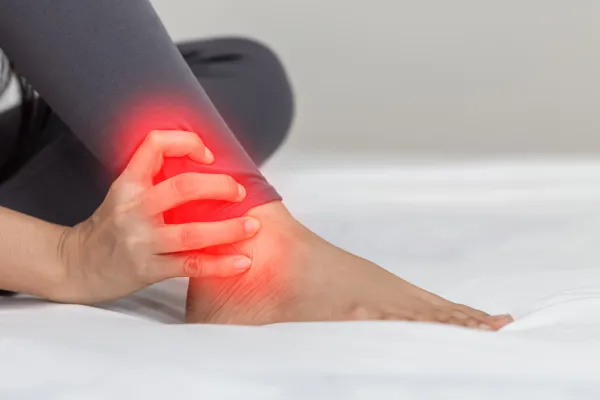Neurology & Pain Management Coding Alert
Wake up to Sleep Apnea Coding Peculiarities
Do you know which type of sleep apnea is most common? Patients that report to your practice suffering from sleep apnea are a diagnosis coding challenge, as there are nearly 10 categories of sleep apnea diagnoses, each with its own code. These distinctions are important, as the more specific you can be about the patient’s sleep apnea, the better the chance for a positive outcome for the patients. (Payers will appreciate your specificity on sleep apnea diagnosis code choices, too.) Check out what one expert had to say about the intricacies of reporting the correct ICD-10 code for each sleep apnea patient. G47.30 Is a Common Code When you choose an ICD-10 code for sleep apnea, you’ll head to the G47.3- (Sleep apnea) code set. From there, you’ll choose from the following apnea codes, depending on encounter specifics: When a patient has sleep apnea, one of the most common diagnoses is G47.30. According to Cynthia A. Swanson RN, CPC, CEMC, CHC, CPMA, AAPC ICD-10-CM Proficient, AAPC Fellow, senior manager of healthcare consulting at Seim Johnson, LLP in Omaha, this is because sleep apnea is so tricky to pin to a specific type. “An unspecified code is assigned when neither the diagnostic statement nor the documentation provides enough information to assign a more specific code,” she says. You might have to use this code more often than you’d like. To mitigate the use of unspecified codes, try to get your providers and coders to understand that the more detail an encounter form carries, the less likely you are to have to use an unspecified code. Px Stops Breathing? Look to G47.33 If the notes indicate that the patient stops breathing periodically during sleep, it’s often an indicator of obstructive sleep apnea (G47.33). “This the most common form of sleep apnea and is caused by partial or complete blockage of the airways during sleep,” explains Swanson. Swanson says symptoms of obstructive sleep apnea may include snoring that is loud, disruptive and regular; frequent breaks in breathing cause by an obstruction; morning headaches; restless sleep; and depression or irritability. The instructions below the descriptor for G47.3- read “Code first underlying condition.” There are several causes and risk factors that can be associated with sleep apnea, including: Note: This is not a comprehensive list of all the underlying conditions that might be associated with obstructive sleep apnea. Always code to the encounter notes, and check with a provider or payer if you are unsure about your ICD-10 code choice. Look for Underlying Conditions Instructions If you look at the instructions under G47.36 and G47.37, you’ll notice that these codes are also tagged with “Code first underlying condition.” “There could be a number of underlying conditions related to these two codes,” Swanson says. “For example, ICD-10-CM code G47.36 may be caused by underlying conditions such as heart failure, stroke, sleeping in high altitudes, and others. “G47.37 [G47.37 (Central sleep apnea in conditions classified elsewhere) may be caused by underlying diagnoses such as COPD, congenital conditions, emphysema, neurological disorders, and others. ICD-10 assignment for these underlying conditions should be based on the medical record documentation and information provided and confirmed by the practitioner.”

Related Articles
Neurology & Pain Management Coding Alert
- Imaging:
Get Specific When Choosing MRI Code
Anatomy only the beginning when looking for right MRI code. Patients that report to your [...] - ICD-10 Coding:
Wake up to Sleep Apnea Coding Peculiarities
Do you know which type of sleep apnea is most common? Patients that report to [...] - Compliance:
Make Sure You’re Using the Right ABN
Additions to ABN changed the form last year. If you haven’t filed an advance beneficiary [...] - You Be the Coder:
Nerve Conduction Test With Latency/Velocity Studies
Question: Notes indicate that the provider performed sensory nerve conduction test using electrode array. There [...] - Reader Questions:
Get all Info Before Diving Into E/M-CT Combo Encounter
Question: Notes indicate the provider performed an office evaluation and management (E/M) service that included moderate [...] - Reader Questions:
Use G43.6 for Various Syndrome Dxs
Question: Notes indicate that a patient suffered from Wallenberg syndrome. I’m not familiar with this term, [...] - Reader Questions:
Use MDM for This CTS E/M Encounter
Question: Notes indicate that the provider performed an office evaluation and management (E/M) service for a [...] - Reader Questions:
Count Views, Then Choose Skull X-Ray Code
Question: Notes indicate that the provider performed “x-ray, skull.” What is the correct code for this [...] - Reader Questions:
Depend on Date of Service
Question: I have some patients whose diagnoses use codes that received updates on October 1. [...]




